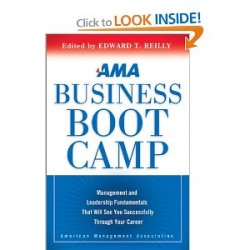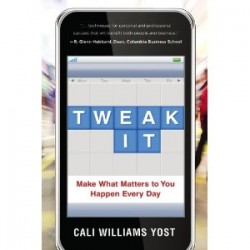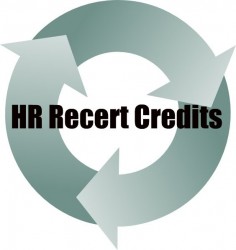Recruiting process improvement, at its finest.
That’s the thought that whipped through my brain earlier this week when I was able to conquer a problem with our recruiting process that has plagued me on and off for approximately 20 months. Here’s the gist of it:
I signed us up for SmartRecruiters back in April 2010. I really like the service (the basic tool is free!), and it was a drastic improvement over our previous system of collecting emailed resumes from interested applicants. Blah.
So I’m cruising along and suddenly have an epiphany. At the time I was using MailChimp to deliver my email newsletter for the blog, and I thought to myself, “What if I could tie our job opening feed from SmartRecruiters into MailChimp? Then people who come to our careers page and don’t see a job they are interested in can submit their email address to be notified of our new job openings automatically.”
The basic principle behind the technology (reading a feed of jobs and pushing out an email about new additions to the list) was sound, and I’d seen it work well for the website.
The key purpose: building engagement in our recruiting process
I wanted to increase engagement in our recruiting process and help candidates learn more about us at the same time. There’s a neat tool within applications like MailChimp that allow you to send automatic emails to someone at regular intervals (autoresponders). In my mind, here’s what that meant:
- Person submits email and gets a warm welcome response immediately.
- 2-3 days later, the person gets an email that goes over our basic hiring process and how it works if they should ever move into that phase with us.
- 2-3 days later, the person gets an email that delves deep into our culture, what we believe, and how that plays a part in the hiring process. It gives them a chance to opt out if they see that we aren’t a place they would like working (on the flip side, it also can turn them into an even bigger fan if they turn out to be a great fit for our culture).
- 2-3 days later, the person gets some general tips on how to prepare for an interview, what to wear, etc.
- Et cetera. The only limit is your creativity, though you wouldn’t want to schedule so many that you’re becoming annoying.
Starting to get my drift? With a tool like this, I could get a lukewarm person very interested in working with us in under a week and without having any hands-on work after the setup. I’m building our brand and keeping our recruiting process lean at the same time.
Disclaimer: I’m all about a high-touch recruiting process, but when you’re the only HR person around, you have to get creative with how to manage the workload of recruiting. I can’t personally talk with every candidate who applies, and I think this is the greatest gift I can offer to someone, since it is valuable information and could help them in the event we have something open that fits their skills/interests.Â
The problem
So that all sounds very positive and encouraging, right? However, when I started trying to test it out, I couldn’t make it work. I’m nerdy, but I’m not a full-blown geek, and even the tech support guys at SmartRecruiters seemed to be stumped.
So I shelved the idea and vowed to give it a few minutes every so often to see if I can figure out some sort of workaround. Approximately twenty months go by with no progress.
Then I accidentally found the solution. Continue reading

 If you’re not familiar, there’s a common phrase this relates to, which is “monkey on your back.” It’s a metaphor for an unwanted burden that it’s difficult to get rid of. When you accept someone else’s problems, you’re taking the monkey off their back and putting it onto yours. Don’t do it. Don’t take the monkey.
If you’re not familiar, there’s a common phrase this relates to, which is “monkey on your back.” It’s a metaphor for an unwanted burden that it’s difficult to get rid of. When you accept someone else’s problems, you’re taking the monkey off their back and putting it onto yours. Don’t do it. Don’t take the monkey.
 So why don’t we give it a shot?
So why don’t we give it a shot? HR Recertification Credits Summary
HR Recertification Credits Summary